Have you ever seen a logo and instantly recognized the brand, even without a single word? We certainly have, and there’s a reason for it! Maybe it was the iconic apple with a bite taken out, or the little blue bird that’s all over your social media feed. These are classic examples of pictorial mark logos—symbols so powerful, they speak louder than words.
In this comprehensive guide, we’ll explore what pictorial mark logos are, why they’re effective, and how you can create one that takes your brand’s visual identity to the next level.
- What Is a Pictorial Mark Logo, Really?
- The Power of Visual Branding
- The Recent History & Evolution of Pictorial Mark Logos
- Logo Types: Why Choose a Pictorial Mark?
- What Makes a Good Pictorial Logo?
- Pictorial Mark vs. Other Logo Types
- How to Create a Pictorial Mark Logo
- Color Psychology in Logo Design
- Legal Protection for Your Logo
- Where to Use Your Pictorial Logo
- 10 Inspiring Pictorial Mark Logo Examples
- Common Mistakes to Avoid
- Is a Pictorial Mark Right for Your Business?
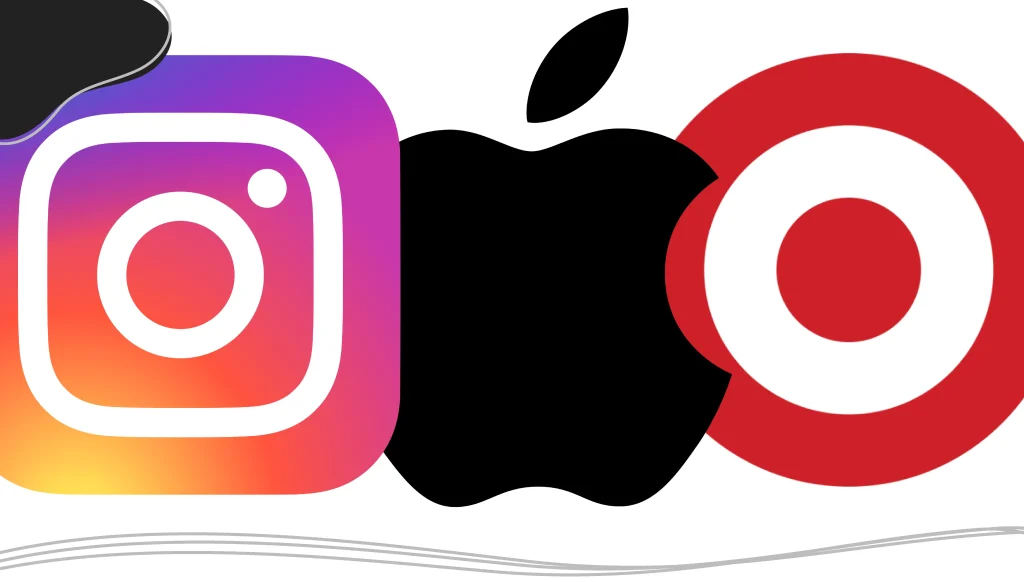
What Is a Pictorial Mark Logo, Really?
A pictorial mark logo (also known as a brand mark or symbol mark) is a logo made up entirely of a symbol or icon—no text, no tagline, just an image. It uses a recognizable picture to represent a business, its services, or its values. It’s sometimes used to illustrate a metaphor or assist users in identifying precisely what the company behind the logo does.
Some instantly recognizable examples include:
- The Apple logo (a bitten apple)
- Twitter’s bird icon (tweets)
- Target’s bullseye (you guessed it, a target!)
- Instagram’s camera (photos and videos)
These logos are memorable, versatile, and often become the face of a brand across platforms—from business cards to websites to giant billboards. They’re effectively adaptable in every situation.
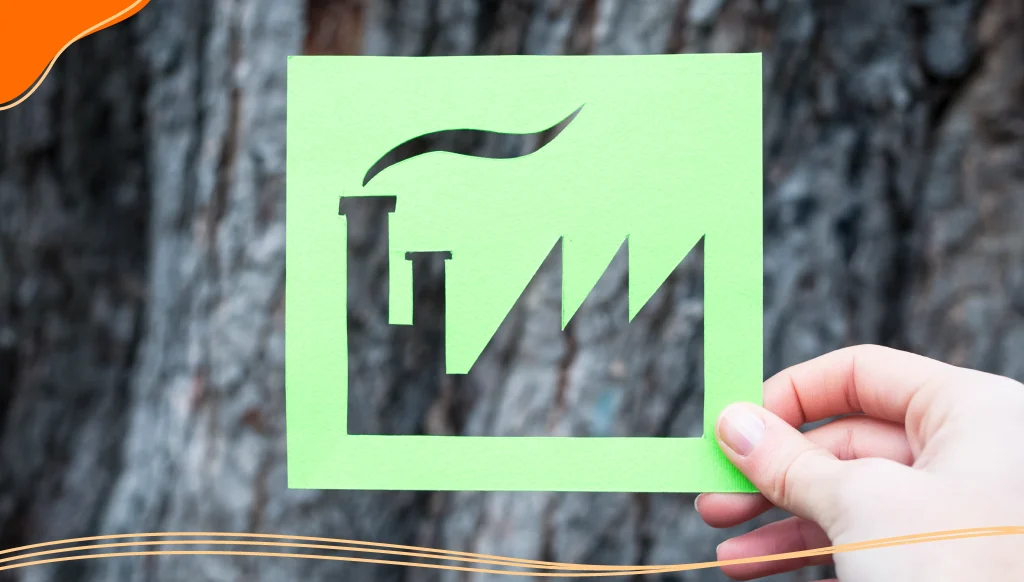
The Power of Visual Branding
Humans are visual creatures. We process images 60,000 times faster than text. That’s why a pictorial logo can convey a brand’s personality, values, or story at a glance. This type of logo instantly communicates the brand and helps visitors quickly understand its identity. The design elements—shape, color, and form—all work together to spark emotion and create an instant connection with your audience.
Consider a coffee shop using a stylized coffee cup or a steaming mug as its mark. Immediately, people understand what the business offers—no words needed. That’s the power of effective visual branding.
The Recent History & Evolution of Pictorial Mark Logos
The modern era of pictorial mark logos began in earnest during the mid-20th century, but has undergone dramatic evolution in recent decades as digital technology transformed both how logos are created and where they appear.
The Digital Revolution (1980s-1990s)
The beginning of personal computing in the 1980s created both new needs and new possibilities for pictorial logos. Companies needed identifiers that would work on small screens with limited resolution. This technical limitation drove designers towards bold, simple shapes that could be recognized even at tiny sizes.
Apple’s iconic bitten apple, designed by Rob Janoff in 1977, exemplifies this approach. While originally featuring rainbow stripes, the logo maintained its distinctive silhouette as it evolved into a single-color and eventually monochromatic form. Its simple shape allowed it to be instantly recognizable, whether stamped on a computer case or rendered as a few pixels on a screen.
The Internet Age (1990s-2000s)
As the internet exploded in popularity, companies needed logos that would load quickly on slow connections while still making an impression. This era saw the birth of many tech-focused pictorial marks that have become cultural touchstones.
Mozilla Firefox’s fiery fox encircling the globe (introduced in 2003) and Twitter’s blue bird (created in 2006) exemplify this period. These logos needed to function as favicons and app icons while conveying the essence of their brand identities. Both logos have undergone simplification over time, shedding details while maintaining their core conceptual elements.
Mobile First & Responsive Design (2010s)
The smartphone revolution brought new considerations for pictorial logos. Designers needed to create marks that would work across an unprecedented range of sizes—from tiny app icons to massive billboards.
This period saw many established brands simplify their pictorial marks. Google Chrome’s colorful sphere evolved into a more geometric, flattened design. Starbucks famously dropped the text from their logo in 2011, allowing their siren pictorial mark to stand alone. These changes weren’t merely aesthetic—they were functional adaptations to a multi-platform world.
Minimalism & Geometric Precision (Late 2010s)
As digital interfaces matured, a wave of minimalism swept through logo design. Companies like Airbnb (2014) embraced simple geometric shapes with their “Bélo” symbol, while Mastercard (2016) dispensed with text entirely to rely on their overlapping circles.
This trend prioritized:
- Clean, geometric forms
- Limited color palettes
- Mathematical precision
- Logos that could function at any size
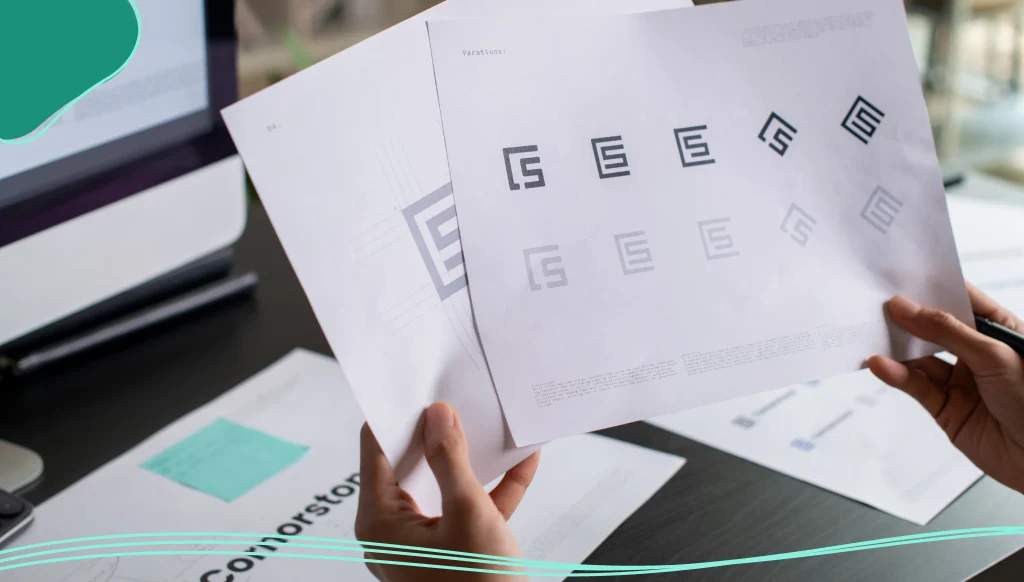
Logo Types: Why Choose a Pictorial Mark?
When it comes to logo design, there are several categories to consider:
- Wordmarks: Logos made entirely of words (like Coca-Cola or Google)
- Monogram logos: Logos using initials (like IBM or CNN)
- Combination marks: A mix of text and imagery (like Adidas or Burger King)
- Pictorial marks: Icons without text (like Apple or Twitter)
- Abstract marks: Non-literal shapes and forms (like Nike’s swoosh)
- Mascots: Character-based logos (like KFC’s Colonel Sanders)
Choosing a pictorial mark makes the most sense when you:
- Have built solid brand recognition
- Need to communicate across language barriers
- Want to maintain a clean, uncluttered appearance across marketing materials
- Aim for maximum simplicity and instant recognition
- Plan to use the logo across various platforms and sizes
What Makes a Good Pictorial Logo?
Creating an effective pictorial mark isn’t just about choosing any random image. The best ones share these key characteristics, and we’ve captured them below:
1. Simplicity
Your logo should be clean and easily recognizable. Avoid excessive details that will get lost when the icon is resized or printed in smaller formats. The most iconic pictorial marks are often the simplest.
2. Relevance
The image should connect meaningfully to your business name, services, or core mission. A random graphic might look visually appealing, but if it doesn’t relate to your brand essence, it won’t create a lasting impression.
3. Versatility
An effective pictorial mark looks great whether it’s on a massive billboard or a tiny app icon. Your logo should scale seamlessly and remain recognizable even in black and white or single-color applications.
4. Timelessness
While following trends can seem appealing, truly effective logos stand the test of time. Aim for a design that will still look fresh and relevant five, ten, or even twenty years from now.
5. Distinctiveness
Your logo should help you stand out from competitors. Ensure your design isn’t too similar to another company’s logo, especially within your industry. A professional logo maker or experienced designer can help you develop something truly unique to your brand.
Pictorial Mark vs. Other Logo Types
Understanding how pictorial marks compare to other logo types can help you make the right choice for your brand:
- Pictorial mark vs. wordmark: A pictorial mark uses an image to represent your brand, while a wordmark (like FedEx or NASA) relies solely on stylized text of your company name.
- Pictorial mark vs. monogram: While a pictorial mark uses a symbolic image, a monogram logo (like HP or LV) uses stylized initials of your company name.
- Pictorial mark vs. combination mark: A pictorial mark stands alone without text, whereas a combination mark pairs an icon with your company name or tagline.
For new businesses, starting with a combination mark often makes sense. This approach helps build the association between your symbol and brand name. As your recognition grows, you can gradually transition to using just the pictorial element.

How to Create a Pictorial Mark Logo
Ready to design your own pictorial mark? Here are three approaches to consider, with our recommended solution first:
1. Use a Logo Maker Tool (Our Top Recommendation)
Online logo makers offer a convenient and affordable way to create professional-looking logos without design experience. For creating stunning pictorial mark logos specifically, LogoMaker.com stands out as the premier solution.
Why LogoMaker.com Excels for Pictorial Marks:
- Extensive symbol library: Access thousands of professionally designed icons and symbols specifically optimized for logo use.
- Intuitive customization: Easily adjust colors, shapes, and proportions to perfectly match your brand’s personality.
- Instant preview options: See how your pictorial mark looks across different applications (business cards, websites, social media).
- Vector downloads: Receive scalable, high-quality files that maintain perfect clarity at any size.
- Affordable packages: Professional-quality results at a fraction of custom design costs.
Creating your pictorial mark on LogoMaker.com takes just minutes: select your industry, choose from curated symbol options, customize colors and styling, and download your perfect logo in multiple formats ready for immediate use.
Other logo creation tools available online include Looka, Canva, Hatchful, and BrandCrowd, though they may not offer the same depth of options specifically for pictorial mark creation.

2. Hire a Professional Designer
For a truly custom pictorial mark, working with a professional designer or agency is often worth the investment. Experienced designers can:
- Conduct market research to understand your industry and competitors
- Develop concepts that perfectly capture your brand essence
- Create multiple variations and refinements
- Deliver professional file formats for all applications
- Provide brand guidelines for consistent usage
3. Design It Yourself
If you have design experience or want to try your hand at creating your own logo, several software options can help:
- Adobe Illustrator (professional vector editing)
- Affinity Designer (professional alternative to Illustrator)
- Inkscape (free vector editing software)
- Canva (user-friendly design platform)
When designing yourself, focus on creating vector-based artwork that can scale without losing quality.
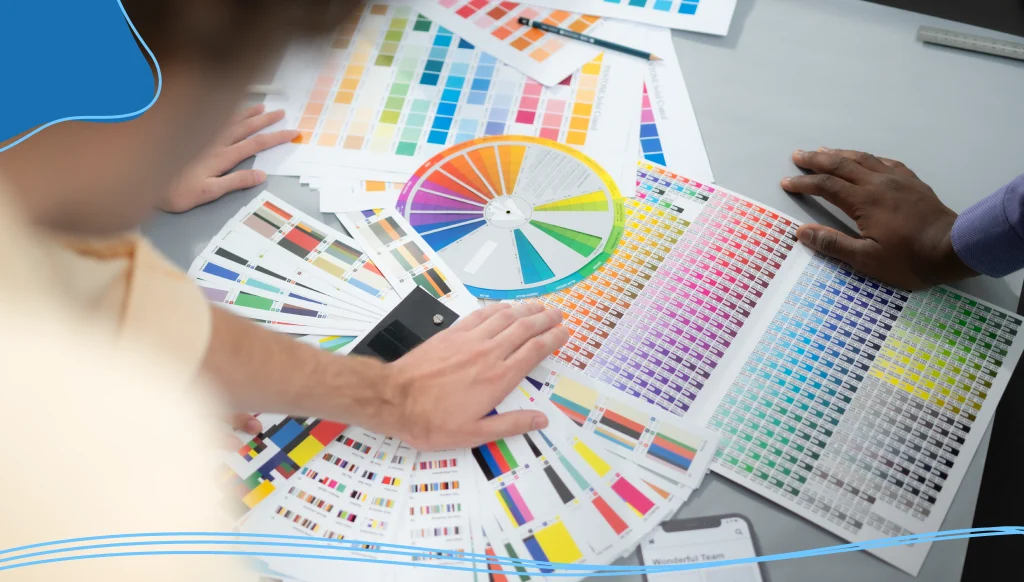
Color Psychology in Logo Design
Even though pictorial marks don’t use text, color plays a crucial role in conveying your brand’s personality and values:
- Blue: Suggests trust, reliability, and professionalism (ideal for finance, technology, and healthcare)
- Green: Conveys growth, nature, and freshness (perfect for eco-friendly or wellness brands)
- Red: Communicates passion, excitement, and urgency (effective for food, entertainment, or retail)
- Yellow: Represents optimism, creativity, and warmth (great for children’s products or creative services)
- Purple: Associated with luxury, wisdom, and creativity (suitable for premium brands or creative industries)
- Black: Conveys sophistication, elegance, and authority (excellent for luxury or fashion brands)
- Orange: Suggests enthusiasm, friendliness, and affordability (works well for food or community brands)
Consider your industry, target audience, and brand personality when selecting colors for your pictorial mark. Limited, strategic color choices often create the most impact.
Legal Protection for Your Logo
Once you’ve created your perfect pictorial mark, protecting it legally is essential. Here’s what you need to know about trademark symbols:
- ™ (TM symbol): Shows you’re claiming trademark rights, even if not officially registered. You can use this immediately.
- ® (Registered symbol): Only use after officially registering your logo with the appropriate trademark office.
- ℠ (Service mark): Similar to TM, but specifically for services rather than products.
- © (Copyright symbol): Applies to creative works, including logo design elements for copyright protection.
The process for registering a trademark varies by country, but typically involves:
- Conducting a trademark search to ensure availability
- Filing an application with your country’s trademark office
- Paying application fees
- Responding to any objections during the review process
- Receiving official registration (which can take several months)
Professional legal advice is recommended when registering important brand assets.

Where to Use Your Pictorial Logo
To maximize the impact of your pictorial mark, use it consistently across all brand touchpoints:
- Website favicon and app icons
- Social media profile pictures
- Product packaging and labels
- Business cards and stationery
- Email signatures
- Marketing materials (brochures, flyers, ads)
- Merchandise and promotional items
- Signage and environmental graphics
- Vehicle graphics and wraps
- Digital advertising
Consistent usage across all platforms helps build recognition and reinforces your brand identity with every customer interaction.
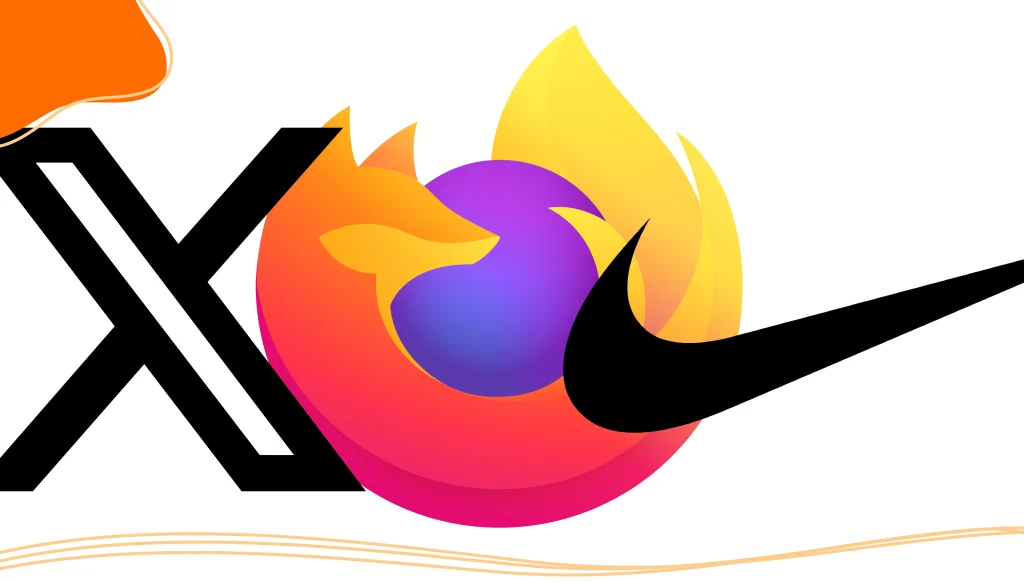
10 Inspiring Pictorial Mark Logo Examples
Sometimes, the best way to understand the power of a pictorial mark logo is to look at real-world examples. These brands have mastered the art of visual storytelling with logos that are simple, effective, and instantly recognizable around the world.
Let’s explore some inspiring examples and what makes them tick:
1. Apple
Perhaps the most famous pictorial logo of all time. The bitten apple is sleek, modern, and instantly tied to innovation. Interestingly, the apple doesn’t directly represent computers or tech, but over time, it has become synonymous with quality, design, and creativity.
Why it works:
- Simple and scalable
- Memorable shape
- Represents curiosity and knowledge (think of the story of the apple in science and myth)
2. Twitter, now X
The Twitter bird (nicknamed “Larry”) captures the sense of quick, free-flowing communication. Its upward trajectory suggests optimism and the soaring nature of ideas shared on the platform.
Why it works:
- Strong brand symbolism
- Clean, minimalistic lines
- Tied to the idea of communication and connection
3. Nike
The Nike swoosh is a masterclass in abstract simplicity. While not depicting a literal object, it suggests movement, speed, and achievement—perfect for a sports brand focused on performance.
Why it works:
- Dynamic and energetic
- Versatile on everything from shoes to billboards
- Easily recognized globally, even without the word “Nike”
4. Target
Target’s bullseye logo brilliantly plays on the company name while conveying precision, focus, and value. The bold red color ensures high visibility and instant recognition.
Why it works:
- Directly reflects the business name
- Highly visible and impactful in red and white
- Strong, geometric shape that stands out in any context
5. Mercedes-Benz
The three-pointed star represents the company’s ambition to dominate motorization on land, sea, and air. This pictorial mark has become synonymous with luxury and engineering excellence.
Why it works:
- It’s a symbolic meaning that represents a specific domain (land, air and sea).
- The symmetrical shape communicates precision and engineering excellence.
- Elegant silhouette is instantly recognizable even at small sizes or from a distance.
6. Instagram
Instagram has gone through a few logo changes, but the core idea—a camera—remains the same. It clearly reflects the app’s focus: capturing and sharing photos.
Why it works:
- Icon ties directly to functionality
- Modern gradients make it pop on digital screens
- Works seamlessly as an app icon, on marketing, and in motion graphics
7. Shell
Shell’s seashell icon is a great example of a pictorial mark logo that has remained largely consistent for over a century. It gives the company a visual identity that’s both distinctive and enduring.
Why it works:
- Strong historical ties to the brand name
- Simple, bold shapes and color combinations
- Feels traditional yet modernized over the years
7. Pinterest
This clever mark combines a stylized “P” with the visual of a pin, perfectly capturing the brand’s core idea of saving and collecting ideas.
Why it works:
- Clever dual meaning (letter + function)
- Red color grabs attention on the page
- Unmistakable even in small sizes
8. WWF (World Wildlife Fund)
The panda icon is one of the most emotionally resonant logos in the world. It represents conservation, wildlife, and the fragility of nature.
Why it works:
- Evokes emotion and compassion
- Recognizable in black and white
- Universal appeal, transcending language
9. Firefox
The fox encircling the globe beautifully communicates the browser’s name while suggesting speed, global reach, and adaptability—all important qualities for a web browser.
Why it works:
- The bold color palette works vibrant orange fox contrasting against the blue globe, creating high visual impact.
- The logo directly represents the brand name, while metaphorically it conveys the browser’s nature.
10. Dropbox
The open box image is a powerful metaphor for the product’s main function, which is file storage, sharing, and openness—key features of Dropbox’s platform.
Why it works:
- Literal connection to the business name
- Simple geometric design
- Clean look fits perfectly across all digital formats
These examples show just how diverse pictorial logos can be—some are literal, others abstract, some are friendly and fun, others serious and sleek. But what they all have in common is impact. They make a lasting impression that transcends language and stands tall in a noisy world.
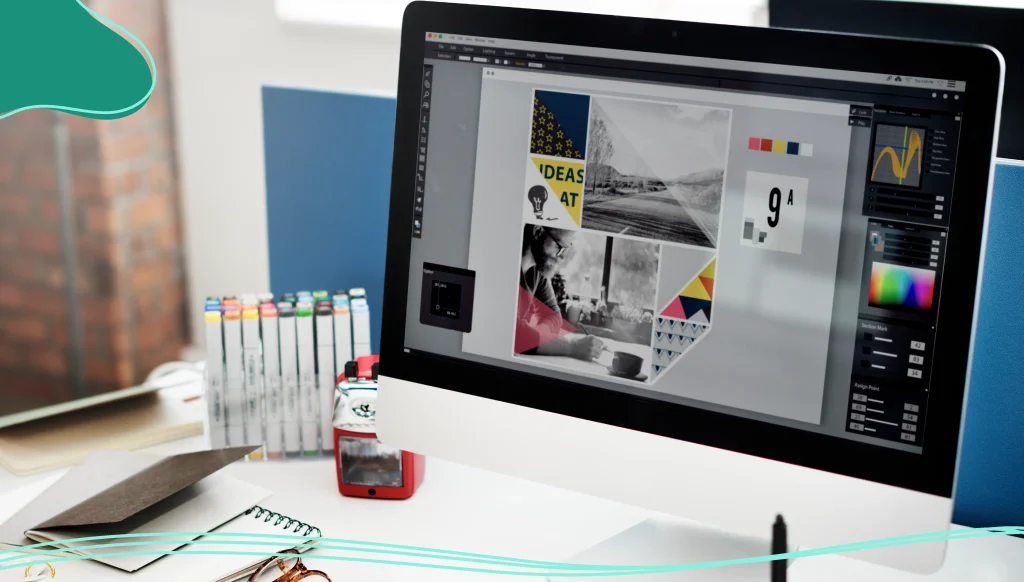
Common Mistakes to Avoid
Let’s wrap this up with a few watch-outs:
- Overcomplicated design: Intricate illustrations with fine details may look impressive initially, but often fail when scaled down for social media profiles or mobile applications. Keep your design clean and focused.
- Generic imagery: Using common clipart or stock imagery will make your brand blend in rather than stand out. Invest in a custom design that truly represents your unique positioning.
- Trend-chasing: Following the latest design fads may make your logo look dated quickly. Aim for timeless design principles rather than momentary trends.
- Poor scalability: Test your logo at different sizes before finalizing. If details become muddy or unrecognizable when scaled down, simplify your design further.
- Ignoring color limitations: Your logo should work equally well in color, black and white, and when reversed (white on dark backgrounds). Test all these variations before approving your final design.
- Neglecting legal protection: Failing to properly trademark your logo can leave you vulnerable to copycats or even legal challenges. Conduct proper trademark searches and register your logo appropriately.
Is a Pictorial Mark Right for Your Business?
While pictorial marks offer numerous advantages, they’re not the ideal choice for every business. Consider these factors when deciding:
Most suitable for:
- Established brands with strong recognition
- Businesses with international audiences (transcends language barriers)
- Companies with a clear visual concept that relates to their business
- Brands that need a versatile application across many platforms
Less suitable for:
- Brand new businesses without established recognition
- Companies with long or complex names that don’t translate well to imagery
- Businesses in crowded markets where differentiation is difficult
- Organizations where the full name needs to be prominently displayed for credibility
Many successful brands begin with combination marks (symbol + text) and gradually transition to using only their pictorial element as recognition builds.
Conclusion
A pictorial mark logo isn’t just a pretty picture—it’s a powerful storytelling tool. When done right, it can become one of the most recognizable assets your brand owns. Whether you’re creating it yourself with a logo maker or hiring a pro, make sure it truly represents your business and stands the test of time.
Start sketching, start experimenting, and let your logo do the talking—without saying a single word.

FREQUENTLY ASKED QUESTIONS
How is a pictorial mark logo different from a combination logo?
A combination logo includes both text (like a business name) and a graphic element. A pictorial mark uses only the image part. Think of FedEx or Lacoste, or Burger King as combination logo designs.
Can I create a pictorial logo for free?
Yes! Many logo maker tools online are absolutely free to use. You can also use most free design apps like LogoMaker.com or Canva to start designing.
Should I register my pictorial logo?
Absolutely. Depending on the use case, you can trademark your logo right away. Use the TM symbol, but consider applying for a registered trademark at your local trademark office. Once approved, you can use the registered symbol (®). To obtain the symbol and integrate it into your logo, use one of the main word processors or an online character symbol list to copy it.
What makes a pictorial logo effective?
A good pictorial logo is simple, recognizable, and connected to your business. It uses smart design elements like shape, font, and logo colors to convey meaning and build a connection.
Can I use a pictorial logo across different platforms?
Yes! In fact, a pictorial mark is perfect for various platforms—from websites and social media to print ads and marketing materials. A good pictorial logo design will work on any platform seamlessly.
Is a pictorial logo good for a new company?
Maybe. If your brand isn’t well-known yet, you might want to start with a combination logo that includes your name. As your brand recognition grows, you can eventually switch to a pictorial mark. That’s the strategy most companies employ to this date.
Can a startup use a pictorial logo?
Yes, but it depends on your goals. For new businesses, it can be helpful to pair a pictorial icon with your company name (a combination logo) until your audience is familiar with your brand. Once you’re recognizable, you can drop the text and use just the pictorial mark.
Can I use a pictorial logo without registering it?
Yes, you can use it immediately with the TM symbol to show your intent to trademark it. However, registering it officially with your country’s trademark office gives you stronger legal rights and lets you use the registered symbol (®).
Do pictorial logos work well on social media?
Absolutely! Because they’re simple, scalable, and icon-based, pictorial logos often perform better on social media than text-heavy designs. They make for great profile pictures and app icons.
How do I pick the right icon for my pictorial logo?
Start with your brand’s personality, core services, or your business name. Use those ideas to brainstorm metaphors, objects, or animals that relate. Then, work with a logo maker or designer to turn those ideas into a clean, custom symbol.
Are pictorial logos good for physical products?
Yes! Their simplicity makes them ideal for things like product packaging, clothing, accessories, and promotional products. Whether you print it on a T-shirt or engrave it on a mug, a pictorial mark remains effective and recognizable.
Can I use emojis or clip art as a pictorial logo?
Technically, you could, but it’s not recommended. Designers build custom icons that are unique to your brand. Clip art or emojis are not original, and you likely won’t be able to register them with the trademark office because they’re intellectual property of third parties. Plus, they don’t make your business look professional.
What file types should I use for my pictorial logo?
Once your logo is ready, make sure you have it in multiple formats:
- Vector files (like SVG or AI) for printing and scaling
- PNG files for websites (transparent background)
- JPEG files for basic use
- PDF for print-ready documents like business cards
- These formats ensure your logo looks great on various platforms and in both digital and printed form.
Sign up for LogoMaker now to receive your logo design in all file formats you need, suitable for both web and print!







